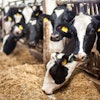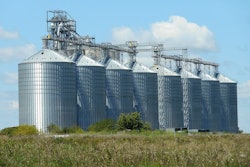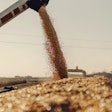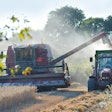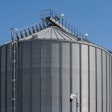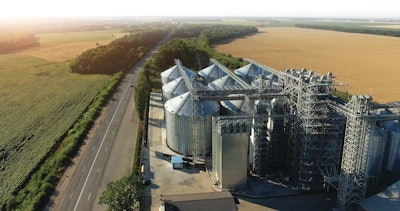
I remember the first article I read in a prominent ag publication regarding the looming irrelevance of the country elevator. It was sometime in the early 2000s. Farmers are building bins and buying semis, it explained. End users are building new facilities in the country. Consolidation and vertical integration are on the rise. The conclusion? There is just no place for a middleman in this new world. As someone who makes his living in support of country elevator and feed businesses, I found this proclamation deeply concerning.
A decade and a half later, many if not all the things in that article have come to pass. Farm storage has increased dramatically, straight trucks and gravity wagons are less and less in evidence at scales, companies have both vertically integrated and consolidated, and end users have built large facilities in rural locations. Where the predictors got it wrong was the declaration that this version of the grain industry holds no place for the country elevator. In many ways, that important link in the supply and service chain is more valuable than ever. Why is that? There are two reasons.
There is a LOT of grain that needs to be taken care of
In 2018, compared to 2004 (15 years ago):
- The U.S. planted about 5% more acres to corn, soybeans and wheat
- The U.S. produced about 24% more corn, soybeans and wheat
- U.S. grain storage capacity (on and off-farm) increased by about 23%, with off-farm capacity increasing almost twice as much as on-farm
- In 2018, September 1 wheat stocks plus the carrying and production of corn and soybeans accounted for 97% of total grain storage capacity. In 2004 that same math accounted for 91%
- We are growing a lot more grain and storage capacity is just barely keeping up with production. Is all that new space being built by multinationals and end users?
- In early summer 2018, I surveyed country elevators across North America, asking several questions related to their volume of grain handled, the building of space and related topics.
- 89% of respondents reported their grain handled has stayed the same or increased over the last five years. 17% have stayed the same, so 72% are handling more bushels
- 84% said that they had added space, upgraded handling speed/capacity, or both over the last five years
- 54% said that they still do not have enough bin space
- In addition to the above, 66% said that farmers in their areas have also added space
From a purely practical, physical standpoint, there is still a need for someone to handle, condition and distribute grain. Growers and end users are not meeting all that need on their own. It’s an important job, and a necessary one, but it’s not the only reason that country elevators are as relevant or more relevant than ever.
Growers and users of grain need service
In many ways, producers and users of grain are at cross purposes. One end of that chain has grain as the result of their efforts. The other has it as an input at the beginning of theirs. One party needs help putting away a lot of grain in a short time, the other needs a steady supply year-round. One is in pursuit of high prices for selling a product, the other in pursuit of low prices for a component of their product. One needs a home for whatever quality of grain their abilities and Mother Nature have made possible, the other (often) needs a consistent quality. You can add to this list almost indefinitely.
It’s not that the two parties can never work together, it’s just that many significant obstacles must be overcome for a win/win situation.
Our markets are efficient enough that middlemen cannot long exist in them if they are not providing significant, obvious value. How then is the country elevator relevant? There must be a significant, obvious value proposition, for both growers and end users, that is easy to see and use.
What are they doing that producers and users either find difficult to do or would rather not do for themselves?
Price neutral intermediary: The basis trading elevator is happy to sell grain at a lower price than they paid the farmer for it when the market allows. Originating as much grain as possible when prices are high is a key component of elevator business strategy. It allows them to set up win/win situations.
Grain movement on the customers’ schedule: Farmers need to move grain when the harvest is running when the weather is good, and when they need cash. Users need to receive grain when it fits their production and workforce schedules. Those things don’t always align. A third party focused on the central principle of creating value for those it buys from and sells to, can make it work for everyone.
会计/文书服务:许多农场生意s are organized such that any load or contract requires multiple checks to multiple entities. For one reason or another farmer from time to time need access to historical information related to the above. End users prefer large contracts with one check. A service business bridging the gap between these needs adds, rather than diminishes, efficiency in the marketplace.
It is easy to add to this list. While there are certainly farm and end-user operations that can and have successfully surmounted these challenges, they are real challenges that do make a direct, mutually beneficial relationship difficult. If that weren’t true, country elevators would have no place — which they clearly do.
None of this is to say that country elevators face no challenges. Like any business, they must create value, compete fiercely for market share, and fend off pressure from all directions. This is the nature of business in a free market, and it is this process that creates strong and efficient businesses and markets in any industry.
Considering all of this, how do strong country elevator businesses grow and thrive?
- They build skills
Successful elevators have skill building in every core competency as the core of their efforts. As a matter of focus and practice, they never stop getting better at grain handling, risk management, basis trading, sales, relationship building and any other skills they need to operate. Even more importantly, they employ a widespread approach to skill building so that no essential skills are concentrated in one person. - They focus on two lists
List #1 is the things that must happen to make the company profitable. This list is not awfully long, and it is the chief driver of operational and business decisions. There are a few key things an elevator must get right to make money, and they are worth focusing on. At the top of the list for most is getting basis ownership on a high percentage of bushels that cross their scales.
List #2 is the elevator’s value propositions — the reasons that growers and users should do business with them. This list may or may not be long, but it’s crucial that every employee of the company is familiar with it and able to communicate at least the general principles of it. - They market themselves
This just means that they are always in some way putting their value proposition out in front of current and prospective customers. Marketing takes many forms and uses many communication techniques, and it is infinitely more important that it is getting done than the particular form it takes.
如果你问的所有权或管理一个成功sful, thriving elevator if they are doing these things, they may or may not be aware that they are — but if you look at their daily practices and company culture, you will find it being done. ■
Based in Stuart, FL, Philip Luce is Director of Education and Grain Merchandising Specialist at White Commercial Corp.


